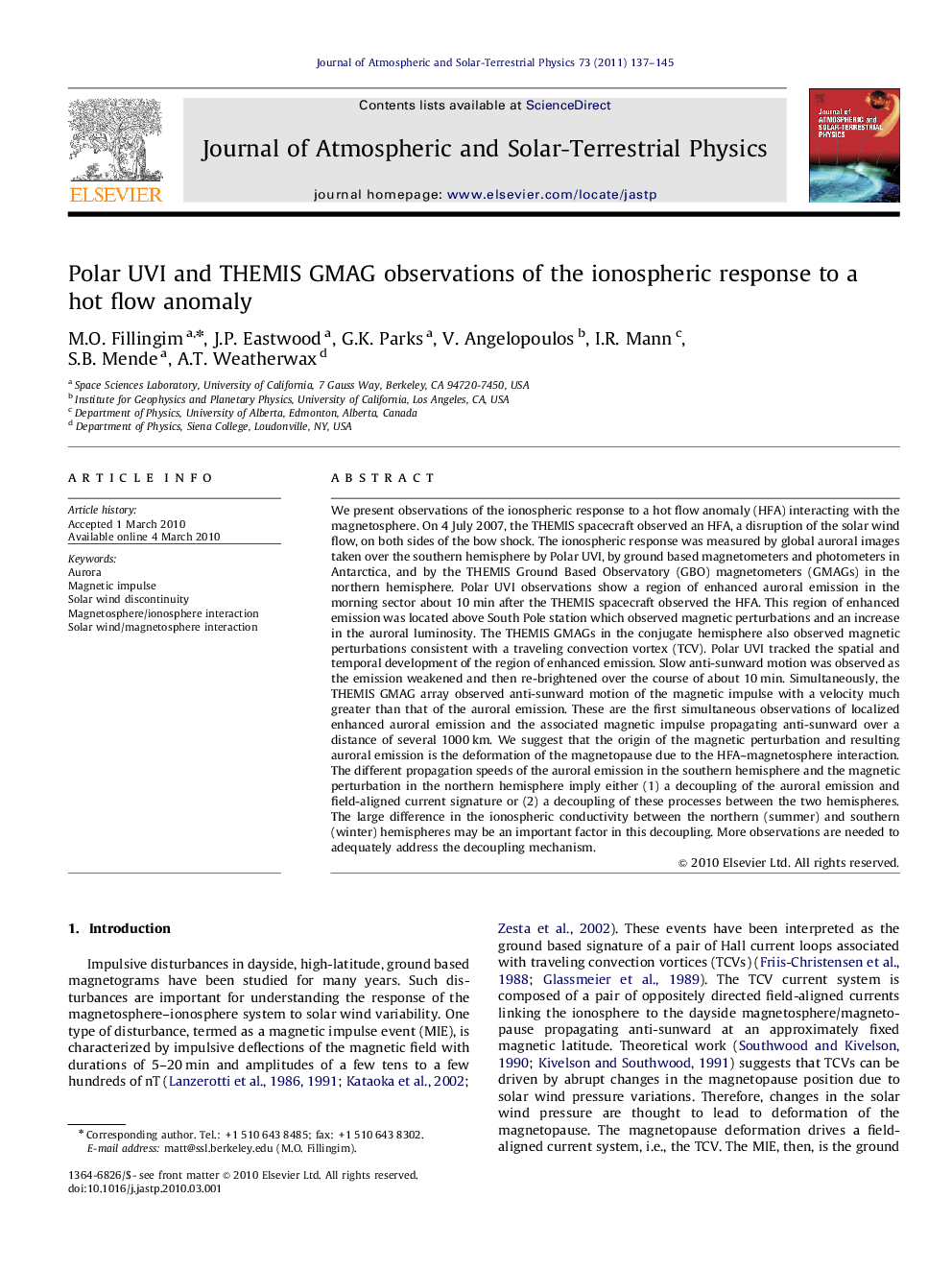| Article ID | Journal | Published Year | Pages | File Type |
|---|---|---|---|---|
| 1777549 | Journal of Atmospheric and Solar-Terrestrial Physics | 2011 | 9 Pages |
We present observations of the ionospheric response to a hot flow anomaly (HFA) interacting with the magnetosphere. On 4 July 2007, the THEMIS spacecraft observed an HFA, a disruption of the solar wind flow, on both sides of the bow shock. The ionospheric response was measured by global auroral images taken over the southern hemisphere by Polar UVI, by ground based magnetometers and photometers in Antarctica, and by the THEMIS Ground Based Observatory (GBO) magnetometers (GMAGs) in the northern hemisphere. Polar UVI observations show a region of enhanced auroral emission in the morning sector about 10 min after the THEMIS spacecraft observed the HFA. This region of enhanced emission was located above South Pole station which observed magnetic perturbations and an increase in the auroral luminosity. The THEMIS GMAGs in the conjugate hemisphere also observed magnetic perturbations consistent with a traveling convection vortex (TCV). Polar UVI tracked the spatial and temporal development of the region of enhanced emission. Slow anti-sunward motion was observed as the emission weakened and then re-brightened over the course of about 10 min. Simultaneously, the THEMIS GMAG array observed anti-sunward motion of the magnetic impulse with a velocity much greater than that of the auroral emission. These are the first simultaneous observations of localized enhanced auroral emission and the associated magnetic impulse propagating anti-sunward over a distance of several 1000 km. We suggest that the origin of the magnetic perturbation and resulting auroral emission is the deformation of the magnetopause due to the HFA–magnetosphere interaction. The different propagation speeds of the auroral emission in the southern hemisphere and the magnetic perturbation in the northern hemisphere imply either (1) a decoupling of the auroral emission and field-aligned current signature or (2) a decoupling of these processes between the two hemispheres. The large difference in the ionospheric conductivity between the northern (summer) and southern (winter) hemispheres may be an important factor in this decoupling. More observations are needed to adequately address the decoupling mechanism.
